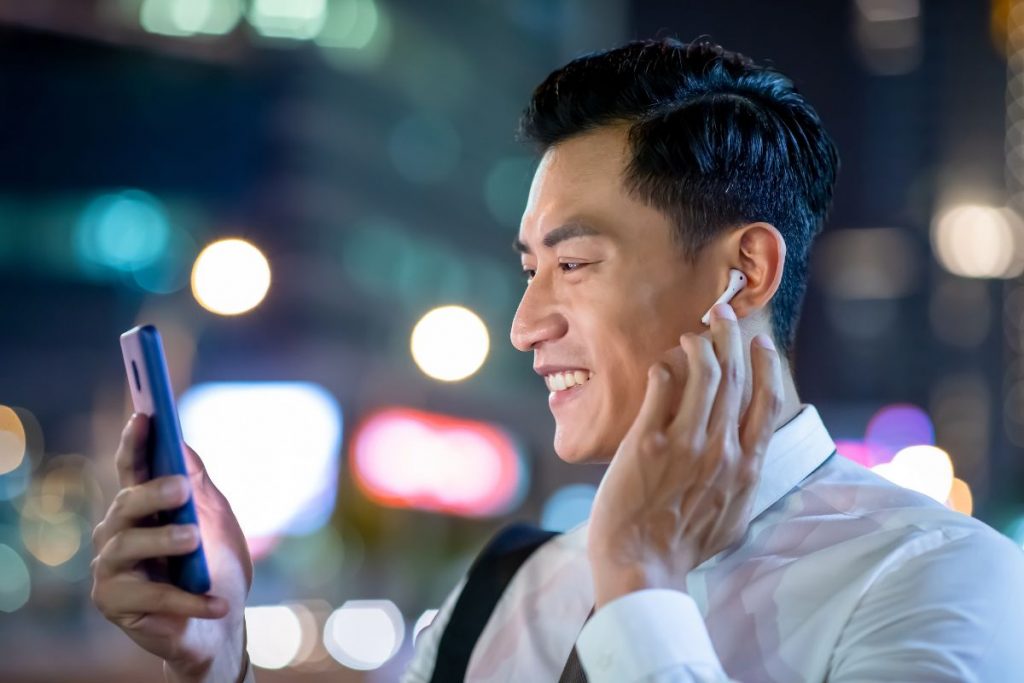Introduction Preserving Ear Health
In this article, Dr Shree Rao talks about preserving ear health with personal audio devices. She is the Best Doctor for Cochlear Implants.
In the modern soundscape dominated by personal audio devices, the preservation of ear health is of paramount importance. Whether it involves enjoying music, engaging with audiobooks, or staying connected through phone calls, personal audio gadgets have seamlessly woven into our daily routines. Yet, the convenience they offer necessitates a responsible approach to safeguarding one’s auditory well-being. This comprehensive article delves into the pivotal subject of preserving ear health in a world surrounded by ubiquitous audio technology. With guidance from experts such as Dr. Shree Rao, a renowned authority in the field of otolaryngology, readers are provided invaluable insights into maintaining their hearing health and striking a harmonious balance between technology and overall well-being.
Understanding sound and hearing

Preserving ear health while using personal audio devices requires a fundamental understanding of sound and its impact on hearing. Sound, typically measured in units known as decibels, plays a significant role in our lives, but its effects on our auditory system can be profound. The ear, with its intricate and delicate structures, is a remarkable organ designed for processing sound, but it can also be vulnerable to damage when exposed to high-intensity sounds over extended periods. Understanding the key principles of sound and how they relate to hearing is essential for maintaining ear health in the age of personal audio devices. By acquiring this knowledge, individuals can take proactive steps to safeguard their hearing capabilities and enjoy the benefits of audio technology without compromising their auditory well-being.
Risks of overexposure
One of the most significant risks associated with personal audio devices is noise-induced hearing loss. Prolonged exposure to loud music or audio can damage the hair cells in the inner ear, leading to irreversible hearing impairment. This form of hearing impairment results from extended exposure to high-intensity sounds, which can harm the delicate hair cells within the inner ear. Unfortunately, damaged hair cells do not regenerate, making any hearing loss resulting from this damage typically permanent and irreversible.
Noise-induced hearing loss, often termed as such, is a matter of growing concern due to the widespread usage of personal audio devices like headphones and earbuds. Although these devices offer convenience and an immersive auditory experience, they can channel sound directly into the ear canal at potentially harmful volume levels.
By being aware of the consequences and potential irreversibility of this type of hearing loss, individuals can take proactive measures to protect their hearing. These measures include using volume-limiting settings on personal audio devices, taking regular listening breaks, and avoiding high sound volumes.
Safe listening levels
Audiologists and hearing health experts strongly advocate adhering to recommended guidelines, which advise individuals to keep audio device volumes at or below 60% of the maximum volume. This adherence to responsible and safe listening practices is a fundamental principle in preventing noise-induced hearing loss.
Furthermore, contemporary audio devices, such as smartphones, tablets, and dedicated music players, often come equipped with integrated volume limiters and safety features. These inbuilt controls serve as a safeguard against inadvertent exposure to excessive sound levels. By configuring a maximum volume limit, users can enjoy their audio content without the risk of unintentionally raising the volume to potentially harmful levels.
In addition to these inbuilt protections, certain applications and software designed for audio devices offer supplementary features for monitoring and managing sound levels. These tools empower users by providing insights into their listening habits, enabling them to track their exposure to high-intensity sounds and make informed adjustments to their listening behaviors.
It is essential to emphasize that while volume limiters and safety features are valuable, they should complement, not replace, individual responsibility. Listeners are encouraged to play an active role in safeguarding their hearing health by adhering to recommended volume levels and being mindful of the duration of sound exposure. Incorporating regular breaks during extended listening sessions can further mitigate the cumulative effects of prolonged sound exposure.
Protective measures
Preserving ear health while using personal audio devices entails the adoption of protective measures.
These advanced devices are designed to diminish ambient noise, enabling users to enjoy audio content at safer volumes. They enhance audio clarity and are particularly beneficial in noisy settings like public transportation.
Compact and portable, earplugs provide a simple yet effective means of reducing external noise. They allow individuals to enjoy audio content without the need for elevated volume.
Incorporating these accessories signifies a commitment to responsible listening practices and is an investment in ear health. High-quality noise-canceling headphones and earplugs are readily available, contributing to long-term auditory well-being. Additionally, it is important to manage listening duration and incorporate periodic breaks to ensure comprehensive ear health.
Role of volume limiting features
Volume limiting features, also known as volume limiters or sound limiters, are built-in settings that allow users to cap the maximum volume output of their devices. This restriction ensures that the audio does not reach a level that could cause damage to the sensitive structures of the inner ear. These features are especially important for individuals who might not be aware of the risks associated with high-volume listening, such as children, teenagers, or those new to personal audio devices.
The specific operation of volume limiting features can vary between devices, but they typically involve setting a maximum volume level that cannot be surpassed, regardless of user input. This is often implemented through software controls or hardware restrictions within the device. Users can adjust this maximum volume limit to a level that is both comfortable and safe for their ears.
Taking breaks

Prolonged exposure to sound, even at moderate volume levels, can exert continuous stress on the delicate structures of the inner ear. This extended exposure, especially through personal audio devices like headphones and earbuds, may gradually lead to fatigue and, over time, noise-induced hearing damage. It is vital to recognize the importance of allowing the ears to rest and recover to prevent such adverse effects.
Taking regular breaks during listening sessions serves as a simple yet effective strategy. These breaks can be as short as a couple of minutes and should ideally occur every hour. During these interludes, users can remove their headphones or earbuds and allow their ears to experience the natural sounds of their surroundings. This brief pause provides the auditory system with a moment to recuperate and reduces the cumulative impact of sound exposure.
Additionally, these breaks offer the opportunity to assess one’s hearing sensitivity. After a brief respite from audio playback, individuals may notice that their hearing becomes more acute, allowing them to detect softer sounds more readily. This serves as a reminder of the ear’s remarkable ability to adapt to varying sound environments.
Avoiding ear damage
- Avoid ear canal insertions: It is essential to refrain from inserting foreign objects into the ear canal, as this can have adverse consequences.
- Handle audio devices carefully – Individuals should handle earphones and headphones gently and maintain safe volume levels to protect their hearing.
- Use hearing protection – When exposed to loud environments, the use of earplugs or earmuffs is advisable to minimize noise-related risks.
- Maintain ear hygiene – Cleaning the outer ear with a soft, damp cloth during regular hygiene routines helps prevent discomfort and infection.
- Regular check-ups – Routine ear check-ups with an audiologist or healthcare provider are recommended to ensure early detection and intervention for hearing issues.
Limiting noise exposure in everyday life
- Adjust home appliance volumes – Individuals should make a practice of lowering volumes on household appliances such as televisions and radios to maintain a quieter environment, promoting ear health.
- Utilize noise-canceling headphones – When exposed to noisy surroundings, individuals are encouraged to opt for noise-canceling headphones, facilitating the enjoyment of audio content at safer levels and enhancing audio quality.
- Exercise vigilance regarding everyday noise – It is imperative to remain attentive to common noise sources present in daily life, such as engaging with power tools. In these situations, individuals should take necessary precautions to safeguard their auditory well-being.
Conclusion
In the realm of personal audio devices, preserving ear health is of paramount importance. This article has delved into the omnipresence of such gadgets and the essential need for informed and responsible usage to safeguard auditory well-being. Guided by the insights of experts like Dr. Shree Rao, it emphasizes the significance of maintaining a harmonious balance between technology and overall health. The practical tips and strategies provided in this article empower readers to continue enjoying the advantages of personal audio devices while ensuring the protection of their precious sense of hearing. In a world filled with sound, it is the collective responsibility of society to safeguard and cherish the ability to hear.

Why consult EarSurgeon, Dr. Shree Rao?
Dr. Shree Cuddapah Rao is acclaimed as one of the best pediatric ENT specialists in Hyderabad. With 10+ years of deep domain experience in the field of ENT, she is the director at Dr. Rao’s ENT Super Specialty Hospital. She underwent specialized training in Rhinoplasty / Facial Plastic surgery at Singapore General Hospital, Singapore. She also underwent advanced training in cochlear implant surgery under Padmashri Dr. Milind V Kirtane and had a Fellowship in a cochlear implant. Having performed over 200 successful cochlear implants for patients worldwide, Dr. Shree Cuddapah Rao is also the recipient of several prestigious accolades in the domain of ENT. Dr. Shree Rao is one of the best ent doctor in hyderabad, to book an appointment click here.
Are you looking for
then you have landed at right place!






